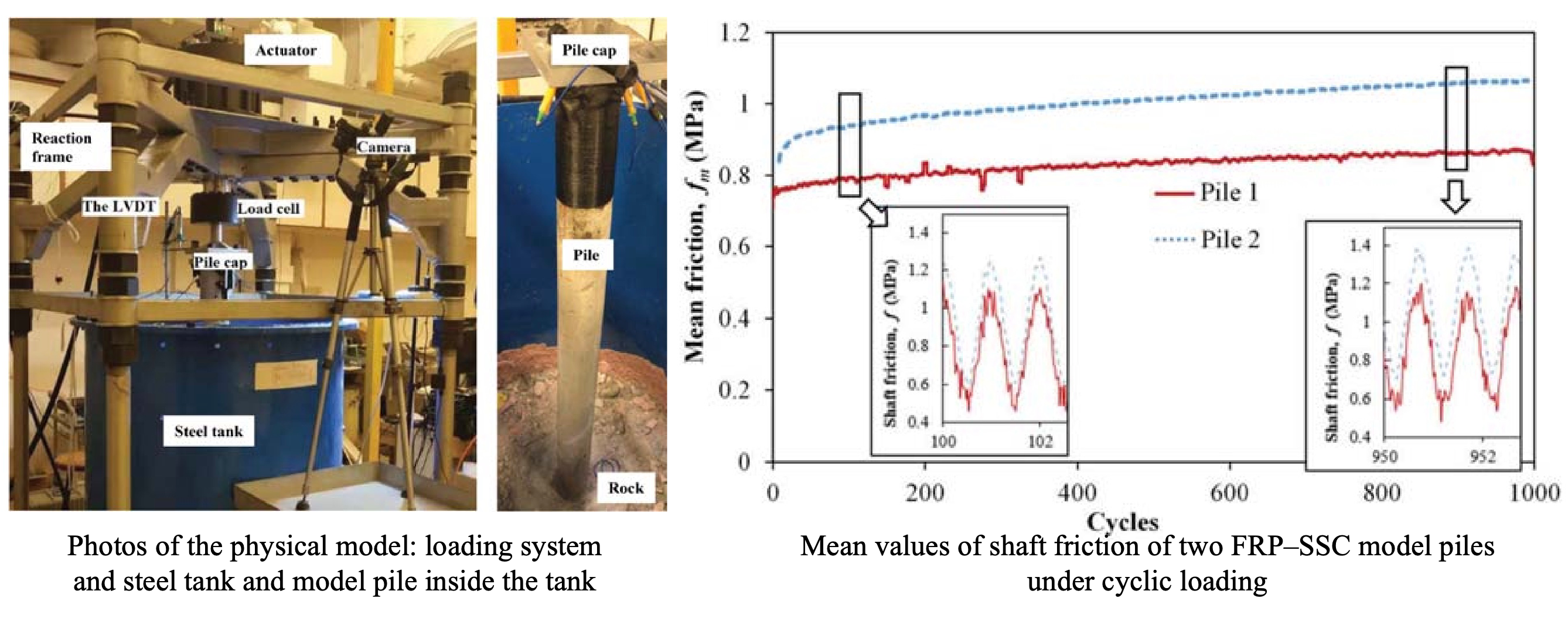Shaft Friction Characteristics of Two FRP Seawater Sea–Sand Concrete Piles in a Rock Socket with or without Debris
The existence of debris at the bottom of a rock socket significantly influences the mechanical behavior of a rock-socketed pile. To investigate the effects of debris on shaft friction and load transfer characteristics of a rock-socketed fiber–reinforced polymer (FRP) seawater sea–sand concrete (SSC) pile, two physical model tests will be conducted in this study. Cyclic and monotonic loadings will be applied on the top of FRP–SSC model piles along the axial direction. The vertical strains inside the model piles will be monitored by embedded fiber Bragg grating (FBG) sensors, which will be used to calculate axial stress inside the pile and shaft friction at the pile–rock interface. From the monitoring results, the detailed distribution of load transfer and shaft friction in each model pile is obtained. A comparison of the results from the two model pile tests indicates that the shaft friction and the end-bearing stress were significantly influenced by debris at the bottom of the rock socket. Under cyclic loading and static loading, the mobilization of shaft friction is more dominant when debris existed than when it does not. The end-bearing stress was reduced due to the existence of debris.





